This post is the second in our series about myFutureNC’s Bite-Sized Webinars. In the first post, we wrote about the webinar on Family-Sustaining Wages.
Ensuring Degrees & Credentials Lead to Jobs – Labor Market Alignment
In this second post in our series on myFutureNC’s Bite-Sized Webinars, we will again be looking through a regional lens. This time, however, the data are not available for the Land of Sky region as a whole, nor for each county individually. Instead, the data cover the Asheville Prosperity Zone Sub-Region, which includes the four counties in the Land of Sky region (Buncombe, Henderson, Madison, and Transylvania) plus Polk and Rutherford counties. This time, our topic is Labor Market Alignment.
myFutureNC presented this Bite-Sized Webinar on April 9, 2024. In that presentation, Dr. Robert Locklear, the Regional Impact Manager for myFutureNC for the Sandhills Region, informed viewers that, at the state level, 82.3% of postsecondary degrees and credentials conferred by regional institutions are aligned with labor market needs. The statewide labor market alignment goal for 2030 is 85%.
In the Asheville Prosperity Zone Sub-Region, the rate is about 10% lower than for the State of North Carolina as a whole and also farther away from our 2030 goal, with 72.1% of postsecondary degrees and credentials conferred by regional institutions aligned with labor market needs.
A related data point is the list of the Top 3 Five-Star Jobs, which are high-demand, high-growth jobs that pay a family-sustaining wage. For the Asheville Prosperity Zone Sub-Region, those jobs are Nurse Practitioners (5% annual growth), Logisticians (4% annual growth), and Physician Assistants (3% annual growth). The image below shows both of these featured data points–Labor Market Alignment and Top 3 Five-Star Jobs–which are both in the Labor Market Alignment section on the bottom the page 1 of the data profiles.
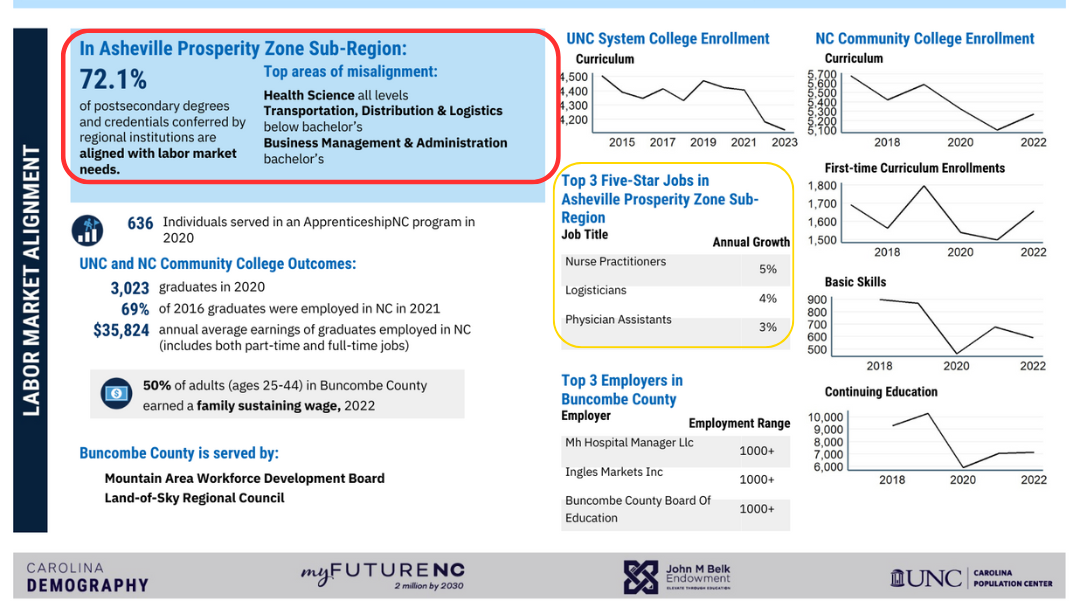
Connection to Our 2030 Goals for Educational & Workforce Attainment
The labor market alignment rate of 72.1% is 27.9% below our 2030 strategic goal of 90% labor market alignment in the workforce:
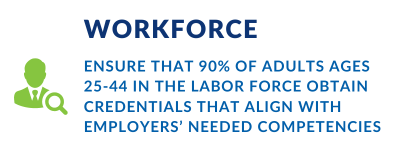
The charts below show the labor market alignment rates for the Asheville Prosperity Zone Sub-Region according to the myFutureNC county profiles from 2020, 2022, and 2024, and compare those rates to our 2030 goal of 90%. Check out our data dashboard for dozens more charts like these that track our progress toward our educational and workforce attainment goals.
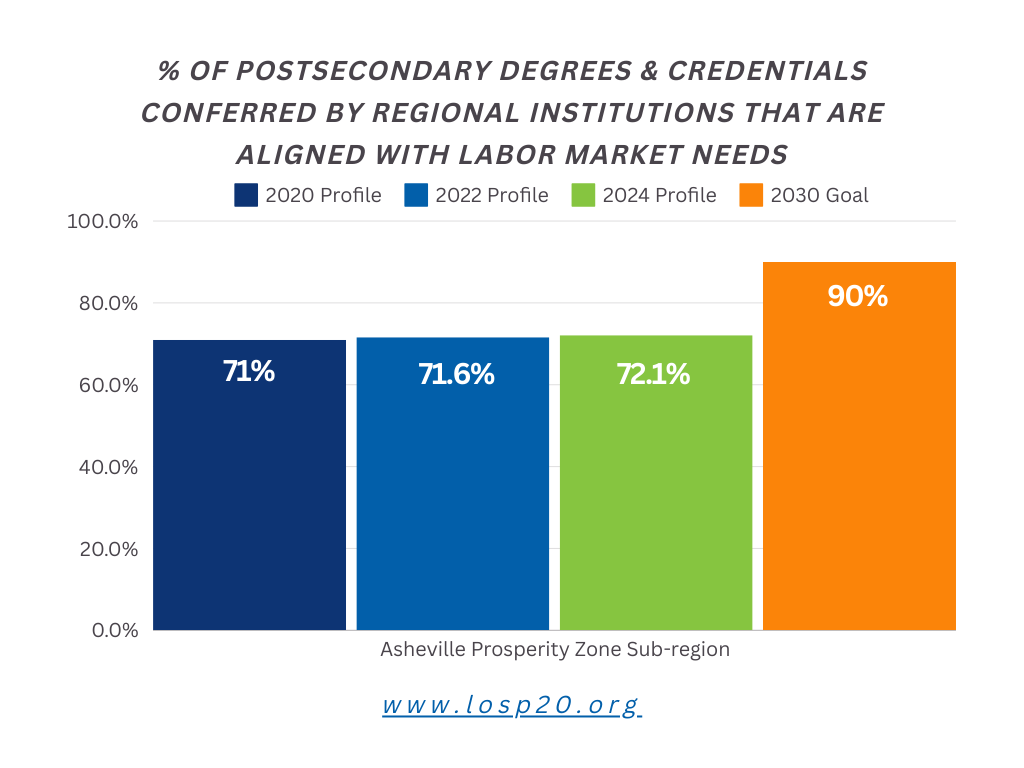
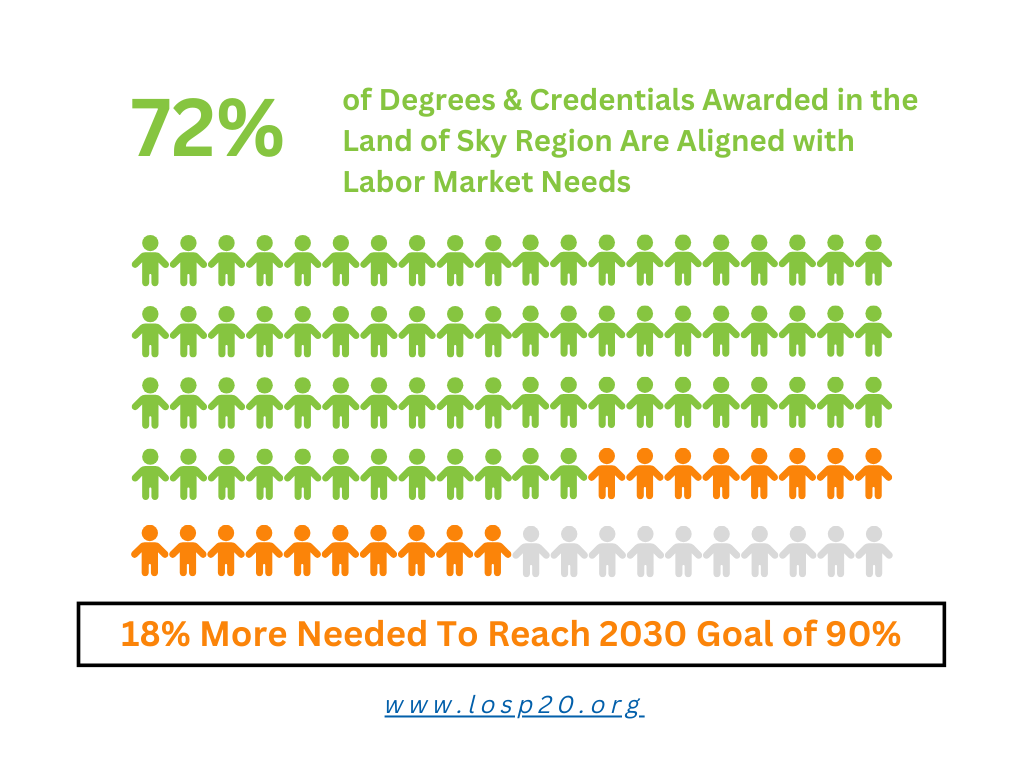
Top Areas of Misalignment in the Labor Market
The top areas of labor market misalignment are very similar at both the state level and in the Asheville Prosperity Zone Sub-Region.
| Asheville Prosperity Zone Sub-Region | State of North Carolina |
|---|---|
| Health Science, all levels | Health Science, below bachelor’s |
| Transportation, Distribution, & Logistics, below bachelor’s | Transportation, Distribution, & Logistics, below bachelor’s |
| Business Management & Administration, bachelor’s | Business Management & Administration, bachelor’s |
What Is Labor Market Alignment?
Andrew Berger-Gross from the NC Department of Commerce’s Labor & Economic Analysis Division (LEAD) led the deep dive into the data section for this webinar. He defined labor market alignment as the state in which the priorities of the higher education system as the same as the priorities of employers. Mr. Berger-Gross also explained why labor market alignment matters, and he gave examples for two industries at specific education levels (Business Management & Administration, bachelor’s, and Health Science, below bachelor’s). Both of these examples show up in the top three areas of misalignment in the table above.
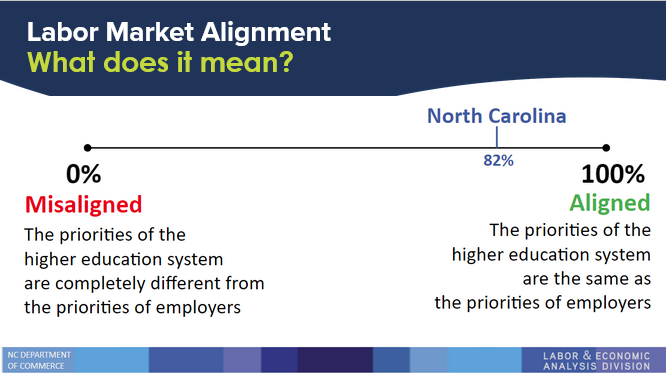
Best Practices To Increase Labor Market Alignment
The best practices section of this webinar featured Dr. Sandy Stewart, the President of Sandhills Community College, who shared some of the practices and processes that he and the College have successfully utilized to increase labor market alignment. Dr. Stewart stressed the important of having robust engagement with the business community, and he noted one significant strength of the NC Community College System is the ability of community colleges to be nimble in their responses to employer needs. He recommended conducting a gap analysis with local employers to find out at a granular level what credentials (certificates, degrees, etc.) do they need and for what positions and then aligning programs at the community college to be responsive to those needs.
Land of Sky P20 Council's Efforts To Increase Labor Market Alignment
Many of our initiatives at the Land of Sky P20 Council have been focused on increasing labor market alignment in our region. Some of these efforts include three separate #worklocal campaigns (in Buncombe, Henderson, and Transylvania counties), our “localized” NCWorkforce Credentials directory, our partnership with A-B Tech and Blue Ridge Community Colleges to provide education and training through Project Collaborate, and the 2022 State of Our Workforce: Western North Carolina survey of employers.
Visit myFutureNC’s Labor Market Alignment indicator page for more information including a definition of Labor Market Alignment, an explanation for why this indicator matters, data on the state’s performance (both in the aggregate and disaggregated by region), details on the methodology, and links to other organizations in NC that are working on this topic.
Stay tuned for more in this series. Next up: FAFSA & Financial Aid Resources.


